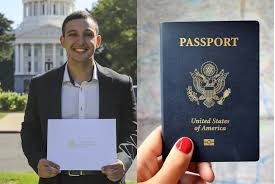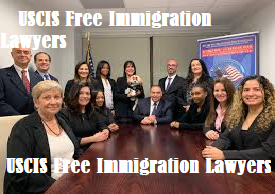USA Immigration Guide 2025–2026
Introduction
The United States remains one of the top destinations for immigrants worldwide. With promises of better job opportunities, quality education, personal freedom, and high living standards, the U.S. continues to attract millions of applicants each year. However, the immigration process can be overwhelming without proper guidance. This USA Immigration Guide 2025/2026 provides a comprehensive, easy-to-understand roadmap for Nigerians, students, skilled workers, and global applicants who dream of relocating to the U.S.
In this guide, you’ll discover the updated visa categories, eligibility requirements, key changes for 2025/2026, application tips, interview guidelines, and settlement advice—everything you need to navigate the U.S. immigration system successfully. The U.S. immigration system is governed by federal laws and policies that regulate the entry, stay, and naturalization of foreign nationals. Immigration is primarily managed through the U.S. Citizenship and Immigration Services (USCIS), the U.S. Department of State, and the U.S. Department of Homeland Security. There are two main immigration paths:
- Immigrant Visas: For those intending to live permanently in the U.S. (e.g., family-sponsored, employment-based, and diversity lottery).
- Non-Immigrant Visas: For temporary visits (e.g., tourism, study, work, business).
Key Immigration Changes for 2025/2026
Several immigration policy shifts are expected or have been announced for 2025/2026. These changes aim to improve visa processing, encourage skilled immigration, and streamline legal pathways see https://www.usa.gov/immigration-and-citizenship.
Highlights:
- Increased H-1B quota to attract tech and healthcare professionals.
- Expedited visa processing for students and STEM workers.
- Tighter scrutiny on fraudulent family-based applications.
- New AI-supported digital systems for faster case adjudication.
- Reintroduction of some humanitarian programs paused during previous administrations.
These reforms reflect a global trend toward merit-based immigration, especially for skilled workers in demand-driven sectors.
Common U.S. Visa Categories
- Non-Immigrant Visas
- B1/B2 – Tourist/Business Visa
- F1/M1 – Student Visas
- J1 – Exchange Visitor Visa
- H-1B – Temporary Skilled Worker
- L1 – Intra-company Transfer
- O1 – Individuals with Extraordinary Ability
- Immigrant Visas
- Family-Sponsored Visas
- Employment-Based Visas (EB-1 to EB-5)
- Diversity Visa (DV) Lottery
- Refugee or Asylum Status
Student Immigration (F1, M1 Visas)
For Nigerians and other global students, the F1 and M1 student visa categories provide legal entry into the U.S. for academic and vocational programs respectively.
Key Requirements:
- Acceptance into a SEVP-certified school or university
- Sufficient financial support
- Ties to your home country
- SEVIS registration and payment
Students should begin the application process at least six months before their intended start date. With the new changes in 2025, there is more flexibility for STEM students seeking Optional Practical Training (OPT) and transitions to H-1B.
Employment-Based Immigration
Employment visas are critical for skilled workers seeking long-term residency or work in the U.S.
Popular Visa Paths:
- H-1B Visa: Requires sponsorship from a U.S. employer; capped annually.
- EB-1: Priority workers (executives, researchers).
- EB-2: Advanced degree professionals.
- EB-3: Skilled and unskilled workers.
- EB-5: Investors creating jobs in the U.S.
Applicants are advised to engage U.S.-based legal counsel or immigration consultants to ensure accurate paperwork and employer sponsorship.
Family-Based Immigration
The U.S. offers one of the most robust family-based immigration systems globally.
Eligible Relatives Include:
- Spouse of a U.S. citizen or permanent resident
- Children (unmarried/minors)
- Parents
- Siblings (citizen-sponsored only)
A U.S. sponsor must submit a petition, show proof of relationship, and meet income thresholds to support the immigrant.
The Diversity Visa (DV) Lottery
Each year, the U.S. government offers up to 55,000 permanent residency slots through the Diversity Visa (DV) program, commonly called the “Green Card Lottery.”
Eligibility Criteria:
- Birth in an eligible country (Nigeria was previously excluded but status may change)
- Minimum high school education or two years of recent work experience
- Valid and complete application during the open registration period
Applicants must be cautious of fraud and only use the official entry portal.
Humanitarian Pathways
The U.S. continues to welcome individuals fleeing conflict, persecution, or natural disasters through:
- Asylum: For individuals already in the U.S. who fear persecution in their home country.
- Refugee Program: For individuals abroad referred through the UN or U.S. embassies.
- Temporary Protected Status (TPS): For citizens of certain countries facing crises.
These programs require strong documentation and typically involve extensive background checks and interviews.
Step-by-Step Application Process
While steps vary by visa type, the general process includes:
- Determine Eligibility
- Choose the Right Visa
- Complete Online Application (DS-160 or I-130, I-140)
- Pay Application Fees
- Schedule Visa Interview at U.S. Embassy or Consulate
- Attend Biometrics Appointment (if required)
- Prepare Supporting Documents
- Attend Interview
- Visa Decision & Passport Collection
Applicants must ensure all information is accurate, complete, and timely to avoid denial.
Immigration Interview Preparation
Interviews are held at U.S. consulates or embassies and are critical in determining approval.
Tips for Success:
- Arrive early and dress professionally
- Be honest and consistent with your forms
- Know your personal and sponsor details
- Bring original documents and photocopies
- Prepare for questions about your intent, plans, and ties to your home country
Settlement: What to Do After Approval
Once your visa is approved and you arrive in the U.S., there are important steps to follow:
- Register for a Social Security Number (SSN)
- Open a bank account
- Secure housing
- Enroll in health insurance
- Begin work or studies
- Comply with visa terms
Settling successfully also requires cultural adaptation, understanding U.S. laws, and possibly filing for status adjustments if eligible (e.g., applying for a Green Card from a work visa).
Common Pitfalls and How to Avoid Them
Mistakes to Watch Out For:
- Incomplete or incorrect applications
- Missing deadlines
- Providing false information
- Falling victim to immigration scams
- Ignoring visa expiration dates
Avoid shortcuts, rely on verified government sources, and consult immigration professionals when needed.
Final Tips for a Successful Immigration Journey
- Start early: Visa processes can take months.
- Organize your documents: Always keep digital and hard copies.
- Practice your interview: Nervousness can lead to mistakes.
- Be financially ready: U.S. living costs can be high.
- Stay updated on policies: Immigration laws are dynamic.
Persistence, preparation, and honesty are the pillars of a successful immigration journey.
Conclusion
The dream of moving to the United States or Canada is alive and well in 2025/2026, but achieving it requires knowledge, planning, and the ability to navigate an often-complex immigration process. Whether you are a student seeking world-class education, a skilled worker pursuing career growth, or a family member reuniting with loved ones, the U.S. immigration system offers structured pathways to legal entry.
By following this step-by-step USA Immigration Guide 2025/2026, you’ll place yourself ahead of thousands of applicants and increase your chances of approval. Stay informed, stay patient, and take the right steps toward making your American dream a reality.





